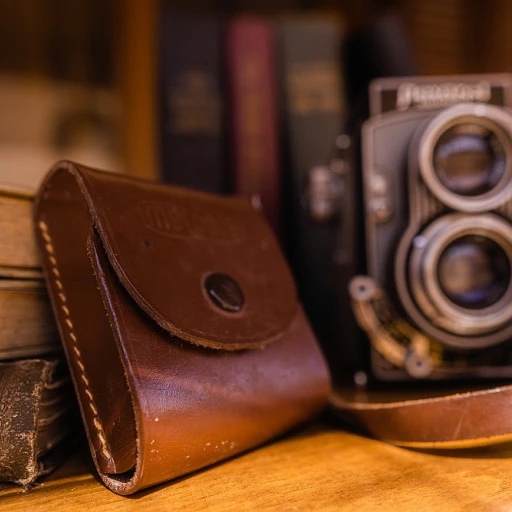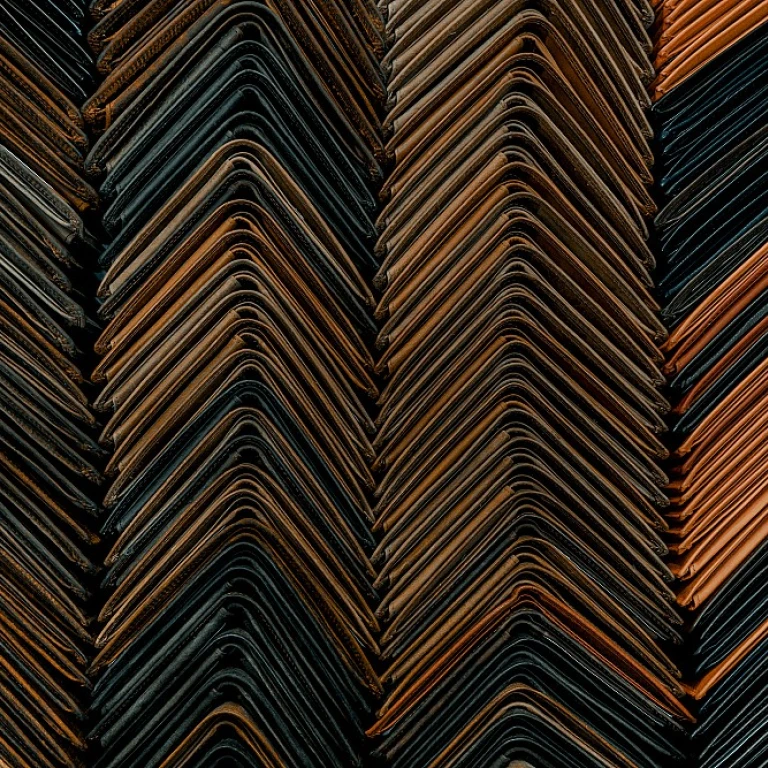The Basics of Pattern Making
Understanding the Fundamentals of Pattern Making
Embarking on the journey of pattern making for fabric and leather goods offers a rewarding dive into the very nature of fashion craftsmanship. At its core, pattern making is the process of creating a blueprint for any garment or accessory. It involves translating a designer's vision into a tangible reality by mapping out the shapes and pieces that will eventually be crafted into a luxury item.
Patterns are integral to the production of both leather and fabric goods, dictating the fit, style, and functionality of an item. They are essentially the building blocks upon which complex designs are constructed. This meticulous process begins with a clear understanding of both the material being used and the intended design. Whether it’s a sophisticated handbag or a chic jacket, each product requires a unique approach.
The language of pattern making includes terms like "seam allowances," "notches," and "grain lines." Seam allowances dictate the extra fabric needed for sewing the pieces together, while notches serve as reference points to align different parts seamlessly. Grain lines, particularly crucial when working with fabric, guide the orientation of the pattern pieces, ensuring that the fabric drapes as intended.
For beginners, starting with a simple design is key. This could mean creating a tote bag or a basic leather pouch. Simplicity allows focus on getting comfortable with different tools and understanding the dynamics of pattern placement—an essential skill for all pattern makers. As for advanced practitioners, mastering the art of drafting more complex shapes and integrating elements like pleats, tucks, and darts becomes the exciting challenge.
Realizing the vital role pattern makers play in the fashion industry opens doors to various design opportunities. They bridge the gap between creativity and practicality, ensuring each design is not only aesthetically pleasing but also wearable. To ensure bespoke services, personalization in luxury leather goods can transform a simple accessory into a one-of-a-kind item. Gain more insights on how personalization plays a crucial role
here.
The Essential Tools for Crafting Patterns
When venturing into the meticulous world of pattern making, understanding the array of tools at your disposal is crucial for success. Whether you're drafting a pattern by hand or utilizing technology, these tools will define the precision and efficiency of your work.
For traditionalists, hand-crafting patterns starts with the basics: pattern paper, a set of good quality pencils, an eraser, and a ruler – these are the timeless essentials. Pattern paper offers the perfect surface for sketching outlines and is sturdy enough to withstand multiple redraws until the final design is attained. The pencil, the true extension of the designer's hand, affords the flexibility of exploration without the permanence of ink. A quality ruler ensures straight and accurate lines, crucial for a pattern that will translate seamlessly into a leather or fabric piece.
Moving toward modern methods, the digitization of pattern making is reshaping the industry. CAD (Computer-Aided Design) software has become an invaluable tool for professional pattern makers. It allows for high precision, ease in adjustments, and the capability to replicate or alter designs swiftly. For those looking to knit traditional techniques with modern technology, a digitizer tablet can bridge the gap – capturing hand-drawn lines and transposing them into digital formats.
Integrating these tools into your craft will prepare you for the next step: drawing the master pattern. As you refine your skills, remember how pattern grading will later adjust your design for various sizes. All these elements contribute to the artistry and technical finesse that fashion design celebrates, through the hands and minds of dedicated pattern makers.
Ready to delve deeper into how these elements unite to elevate luxury leather creations? Keep an eye on our next section, where we'll guide you through drawing these intricate designs with step-by-step precision.
Drawing the Master Pattern: Step by Step
Crafting the Perfect Canvas: A Detailed Guide
When embarking on the journey of creating a master pattern for luxury leather and fabric goods, it's essential to approach the task with the meticulous artistry it demands. Crafting this perfect template requires a blend of skillful artistry and technical precision, setting the stage for a flawless production process.
Before you delve into the intricacies, you'll want to ensure you're working on a flat, spacious surface to prevent any distortion of the pattern pieces. Utilizing the right tools is crucial—referencing the essential tools discussed earlier will aid in precise pattern creation.
To begin, you'll need to translate your design onto paper first, often starting with a basic block pattern. This template acts as a blueprint for your final design. With leather, remember that fabric can offer more flexibility, so take into account leather’s unique characteristics such as grain direction and stretch limitations while plotting your design.
Once sketched, take your set square and French curve to meticulously outline the shapes needed. A methodical approach in plotting seam lines, notches, and darts will spare you from future alterations. CAD software, as previously highlighted, can make this process more efficient, offering the ability to test alterations digitally. However, don't undervalue the tactile experience of drafting your patterns by hand—a skill that brings you closer to understanding the material you're working with.
Clear labeling on each pattern piece is indispensable; marking each piece with details of grain lines, seam allowance, and pattern piece names will ensure accuracy and make the subsequent steps, like
precision-crafted hardware integration, seamless.
Once the drafting is completed, inspect and double-check your pattern pieces. A well-drawn master pattern not only enhances the efficiency of your project but also enshrines the standards of luxury craftsmanship, a testament to both technical prowess and creative ingenuity.
Pattern Grading: Adjusting for Size and Fit
Understanding Pattern Grading Techniques
Pattern grading is an essential step in the creation of leather and fabric goods, as it ensures that each design can be adapted to fit a range of sizes while maintaining the integrity of the original pattern. This process involves adjusting the master pattern to create a series of sizes, which is crucial for producing items that fit comfortably and look aesthetically pleasing.
The Importance of Accurate Measurements
The first step in pattern grading is to take precise measurements. This involves understanding the dimensions of the original master pattern and determining the increments needed to scale it up or down. Accurate measurements are vital because even minor discrepancies can lead to ill-fitting products, which can affect both comfort and style.
Methods and Tools for Pattern Grading
Pattern grading can be done manually or digitally, with each method offering its own set of advantages. Manual grading involves using tools such as rulers, grading machines, and pattern notches to adjust the pattern. On the other hand, digital grading utilizes CAD software, which can provide more precision and flexibility. As discussed in the tools section, CAD systems are becoming increasingly popular due to their efficiency and accuracy.
Maintaining Design Consistency
One of the challenges in pattern grading is maintaining the design's consistency across different sizes. This requires a keen eye for detail and a thorough understanding of the design's proportions. Pattern makers must ensure that the aesthetic elements of the design, such as seams and embellishments, remain balanced and proportional, regardless of the size adjustments.
Collaboration with Fashion Designers
Pattern grading is not done in isolation; it often involves close collaboration with fashion designers. Designers rely on pattern makers to bring their visions to life in various sizes, ensuring that each piece retains its intended look and feel. This collaboration highlights the indispensable role of pattern makers in the fashion design process, as they bridge the gap between creative concepts and practical execution.
The Role of Pattern Makers in Fashion Design
The Hidden Architects of Fashion
In the opulent realm of luxury leather and fabric goods, pattern makers often work behind the scenes yet play a pivotal role in bringing a designer's vision to life. Just as a house requires a detailed blueprint before construction, every handbag, shoe, or garment begins with a meticulously crafted pattern. These unsung heroes use their expertise to translate concepts into tangible designs that can be efficiently replicated and produced.
Pattern makers must possess a keen understanding of design, material behavior, and production processes. This expertise allows them to make precise adjustments, ensuring that each piece fits flawlessly and maintains the integrity of the original design, regardless of size or shape variations. Their knowledge extends from traditional paper patterns to the nuances of CAD systems, bridging the gap between artisanal craftsmanship and modern technology, a topic we touched upon earlier.
Furthermore, the pattern maker’s role is crucial in the initial phases of fashion design, where their interpretive skills are needed to decode complex designs into clear, executable patterns. They work closely with designers, production teams, and even sample makers to fine-tune dimensions, adapt patterns for different materials, and address any challenges that arise during prototyping.
Without their diligent work, the vibrant fashion landscape of luxurious leather and fabric goods would not achieve its exquisite allure and perfect fit. As such, pattern makers remain integral to maintaining the high standards expected in the luxury market. Whether it’s an intricate leather handbag or an elegantly tailored garment, the mastery of these craftspeople is woven throughout every stitch.
Shopping for Patterns: Navigating the Marketplace
In our journey through mastering the art of drawing patterns for leather and fabric goods, understanding how to shop for patterns effectively is essential. As an aspiring or seasoned pattern maker, knowing where to source your patterns is just as crucial as creating them. With the knowledge of pattern making basics and the step-by-step guide to drawing master patterns, you are on the path to crafting stunning luxury leather pieces.
When it comes to purchasing patterns, both online and traditional brick-and-mortar stores offer a variety of options. Stores specializing in sewing and fabric supplies often carry commercial patterns, which can be a great starting point for beginners. These patterns come in pre-determined sizes, and while they accommodate a range of fits, learning pattern grading to adjust for individual sizing can be beneficial.
Online platforms have opened up vast possibilities with countless patterns available for purchase. The advantage of digital patterns is immediate access and the potential for tweaking and storing them electronically after applying tools such as CAD. Moreover, many platforms offer reviews and ratings, allowing you to gauge the popularity and usability of a pattern before purchasing.
Price is a significant consideration; patterns can range from economical to quite pricey, particularly those designed by renowned brands or independent designers who focus on unique or trend-setting designs. However, the price isn't always indicative of quality or suitability, so consider what you're hoping to achieve with your design before investing.
An enticing feature that many online retailers offer is free shipping, making your shopping experience more budget-friendly and efficient. Additionally, some websites offer free pattern trials, enabling you to sample before committing to a purchase. This is particularly useful when experimenting with new techniques or styles.
In combination with insights gained from understanding the lifesaving role of pattern makers in fashion design, and the tools from paper to CAD, shopping for patterns becomes a strategic venture. Crafting your luxury leather goods with precision and expertise is genuinely at your fingertips. With patience and practice, your patterns will not only blend seamlessly with your creative vision but also stand as a testament to your burgeoning skills in the art of luxury craftsmanship.

